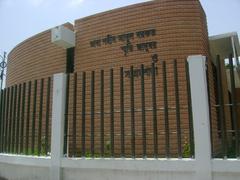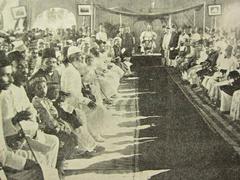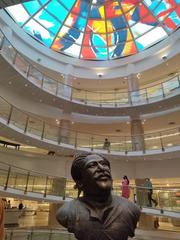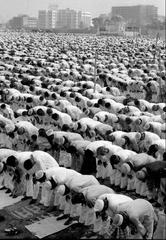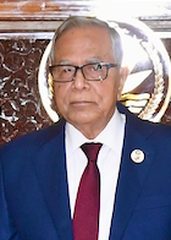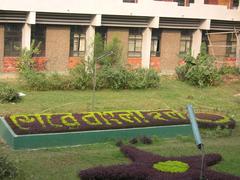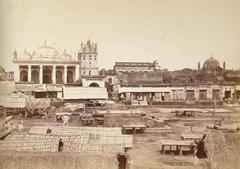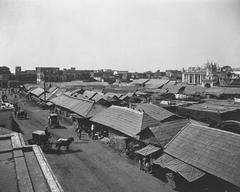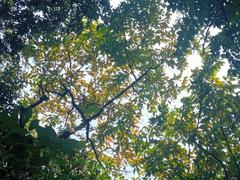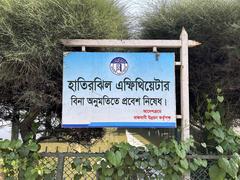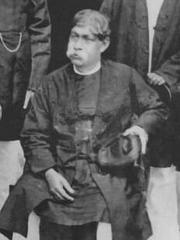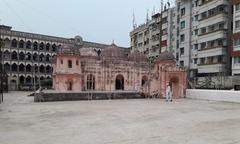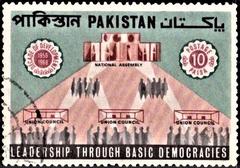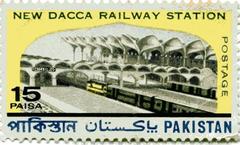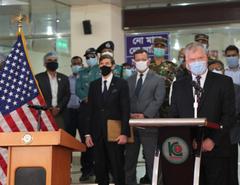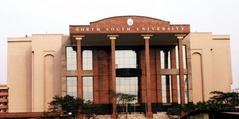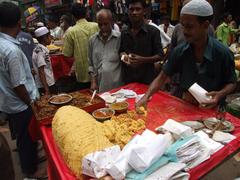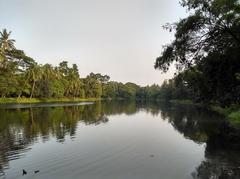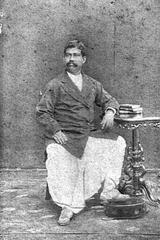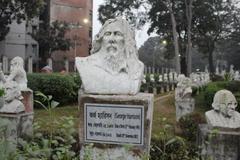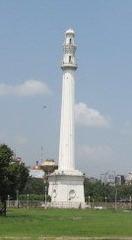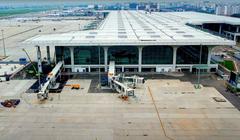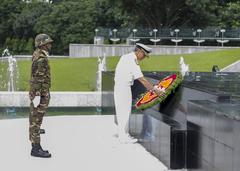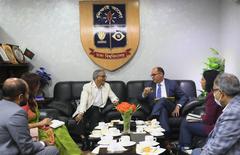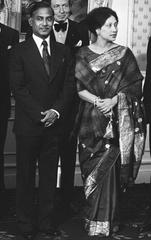Bangladesh Secretariat Dhaka: Visiting Hours, Tickets, and Historical Sites Guide
Date: 14/06/2025
Introduction
The Bangladesh Secretariat, located in the bustling heart of Dhaka, stands as a powerful symbol of the nation’s political history, architectural evolution, and cultural pride. Since its inception in the British colonial era, the Secretariat has played a central role in Bangladesh’s journey—from colonial governance through the country’s tumultuous birth in 1971 to its present status as a dynamic republic.
Today, the Secretariat is the nerve center for the Government of Bangladesh, housing pivotal ministries and senior officials who shape the country’s direction. For visitors—whether researchers, history enthusiasts, or those with official business—the Secretariat offers insights into Bangladesh’s administrative machinery and architectural legacy. While access is restricted, the exterior and its surroundings provide a glimpse into the country’s living history and its ongoing narrative of governance and nation-building (ArchDaily, Dom Publishers).
This comprehensive guide covers the Secretariat’s history, architectural highlights, visitor information, security protocols, accessibility, and practical tips for exploring nearby Dhaka historical sites.
Historical Background
Origins and Evolution
Constructed during the British colonial period, the Secretariat originally served as the provincial government’s office in Bengal. Its functions and stature grew during the East Pakistan era after the 1947 partition, and it became the center of administrative power following Bangladesh’s independence in 1971. Through these epochs, the Secretariat has not only facilitated governance but also borne witness to defining events such as the Language Movement of 1952, the Mass Uprising of 1969, and the Liberation War in 1971 (Mystic Bengal).
Role in National Development
The Secretariat has been instrumental in formulating the Constitution, steering economic reforms, and coordinating national development plans. It is here that Bangladesh’s transformation from a war-torn state to a fast-developing nation has been orchestrated, with each ministry contributing to the country’s evolving priorities (Wikipedia).
Architectural Overview
Design and Influences
The Secretariat’s architecture reflects an interplay between colonial neo-classical styles and modernist principles shaped by leading Bangladeshi architects such as Muzharul Islam. Early structures feature high ceilings, arched windows, and broad verandas—elements designed to withstand Dhaka’s tropical climate. Later expansions embraced regional modernism, emphasizing climate-responsive features, open courtyards, and the extensive use of local red brick, which became a hallmark of Bangladeshi public architecture (ArchDaily, Dom Publishers).
Layout and Features
The campus comprises interconnected blocks arranged around central courtyards. These foster natural ventilation, daylighting, and communal interaction. Key features include:
- Climate-adaptive elements: Deep overhangs, jali screens, and shaded walkways for cooling and airflow.
- Minimal ornamentation: Clean lines and geometric forms in keeping with modernist ideals.
- Urban integration: The Secretariat is strategically situated among Dhaka’s civic icons, such as the National Parliament House and Baitul Mukarram Mosque (EAA).
Expansion and Preservation
The Secretariat has expanded over decades, incorporating new blocks and retrofitting for accessibility, safety, and sustainability. Recent incidents, such as the 2024 fire in Bhaban-7, have prompted further modernization and reinforced the importance of heritage preservation (Bangladesh Secretariat Access Control System).
Visitor Information
Visiting Hours and Entry
- Hours: 9:00 AM – 5:00 PM, Sunday through Thursday (Bangladesh’s working week). Closed on weekends and public holidays.
- Access: Public entry is restricted. Only those with official business, academic or diplomatic appointments, or government-issued invitations may enter. All visitors must present official ID and undergo security checks (Bangladesh Secretariat Access Control System).
Tickets and Permissions
- Tickets: No tickets are sold. Access is only possible with prior approval from relevant authorities or a host ministry.
- Clearance: Secure clearance through an appointment letter or invitation. Foreign visitors should coordinate with embassies or the Ministry of Foreign Affairs.
Security Protocols
- Screening: All entrants are subject to ID checks, metal detectors, and bag inspections.
- Photography: Prohibited inside; permitted outside with caution and respect for signage.
- Prohibited Items: Weapons, alcohol, and unauthorized recording equipment are banned.
- Dress Code: Conservative, professional attire is mandatory. Modest dress is expected for all genders (World Travel Guide).
Accessibility
- Facilities: Newer buildings have ramps and elevators, but access varies. Visitors with disabilities should notify their host in advance.
- Language: Bangla is predominant; English is spoken in many offices. Having a local contact or interpreter is helpful.
Health, Safety, and Facilities
- Restrooms and Cafeterias: Facilities are basic and primarily for staff. Bring water and plan for limited amenities.
- Emergency: Keep embassy/consulate contacts and know the location of hospitals and emergency services (Travel.gc.ca).
- Safety: Stay alert, especially during political events. Avoid protests and large gatherings nearby (Travel Like a Boss).
Practical Tips for Foreign Visitors
- Visa: Foreigners require a visa. On-arrival visas are available for some nationalities, but prior arrangement is advisable.
- Documentation: Always carry passport, visa, appointment letter, and contact details of your host office.
- Transport: The Secretariat is in a congested zone; allow extra time for traffic. Use taxis or ride-sharing apps.
- Currency: Bring Bangladeshi Taka (BDT); ATMs are common but may not always be reliable.
- Dress: Men—long trousers and shirts; Women—modest, arm- and leg-covering attire. Headscarves optional but appreciated.
Nearby Dhaka Historical Sites
Even if access to the Secretariat is limited, its central location makes it a starting point for exploring Dhaka’s historical landmarks:
- National Parliament House (Jatiyo Sangsad Bhaban): Designed by Louis Kahn, a marvel of modernist architecture.
- Lalbagh Fort: A 17th-century Mughal fort.
- Ahsan Manzil: The historic Pink Palace.
- National Museum of Bangladesh: Rich collections of art and history.
- Ramna Park: A green retreat in the city center.
(Mystic Bengal, Dom Publishers)
Frequently Asked Questions (FAQ)
Q: What are the Bangladesh Secretariat visiting hours?
A: 9:00 AM – 5:00 PM, Sunday through Thursday. General public access is highly restricted.
Q: Is there an entry fee or ticket?
A: No. Only those with official business or appointments may enter, and no tickets are issued.
Q: Are guided tours available?
A: Only for academic, official, or diplomatic delegations with prior approval.
Q: Can I take photographs?
A: Outside only, unless otherwise indicated. Photography inside is prohibited due to security.
Q: Is the Secretariat accessible for people with disabilities?
A: Accessibility varies. Contact your host in advance to arrange assistance.
Conclusion and Recommendations
The Bangladesh Secretariat is a living institution—both a vital organ of government and a monument to the nation’s struggles, resilience, and aspirations. While direct access is limited, understanding its significance adds depth to any exploration of Dhaka’s history. For those granted entry, mindful adherence to protocols and respect for local customs are essential.
For general visitors, appreciating the Secretariat’s architecture from the outside and combining your trip with neighboring historical sites will enrich your understanding of Bangladesh’s heritage. Always check the latest security advisories, coordinate with official sources, and use resources such as the Bangladesh Secretariat Access Control System and your embassy for up-to-date information (ArchDaily, VIF India).
For more insights on Dhaka’s cultural landmarks and travel safety, download the Audiala app and follow our updates.
References
- Regional Modernism in Bangladesh: The Architecture of Muzharul Islam, 2019, ArchDaily
- Bangladesh Travel Blog: Top Places to Visit in Dhaka, 2024, Mystic Bengal
- Dhaka - A City of Architectural Marvels, 2022, Dom Publishers
- Secretary to the Government of Bangladesh, Wikipedia
- Bangladesh Secretariat Access Control System
- Bangladesh in 2024: A Year of Political Turmoil and Transformation, 2025, VIF India
- World Travel Guide: Bangladesh
- Travel.gc.ca: Bangladesh
- Travel Like a Boss: Dhaka Safety
- EAA: 10 Best Architectural Buildings in Dhaka
